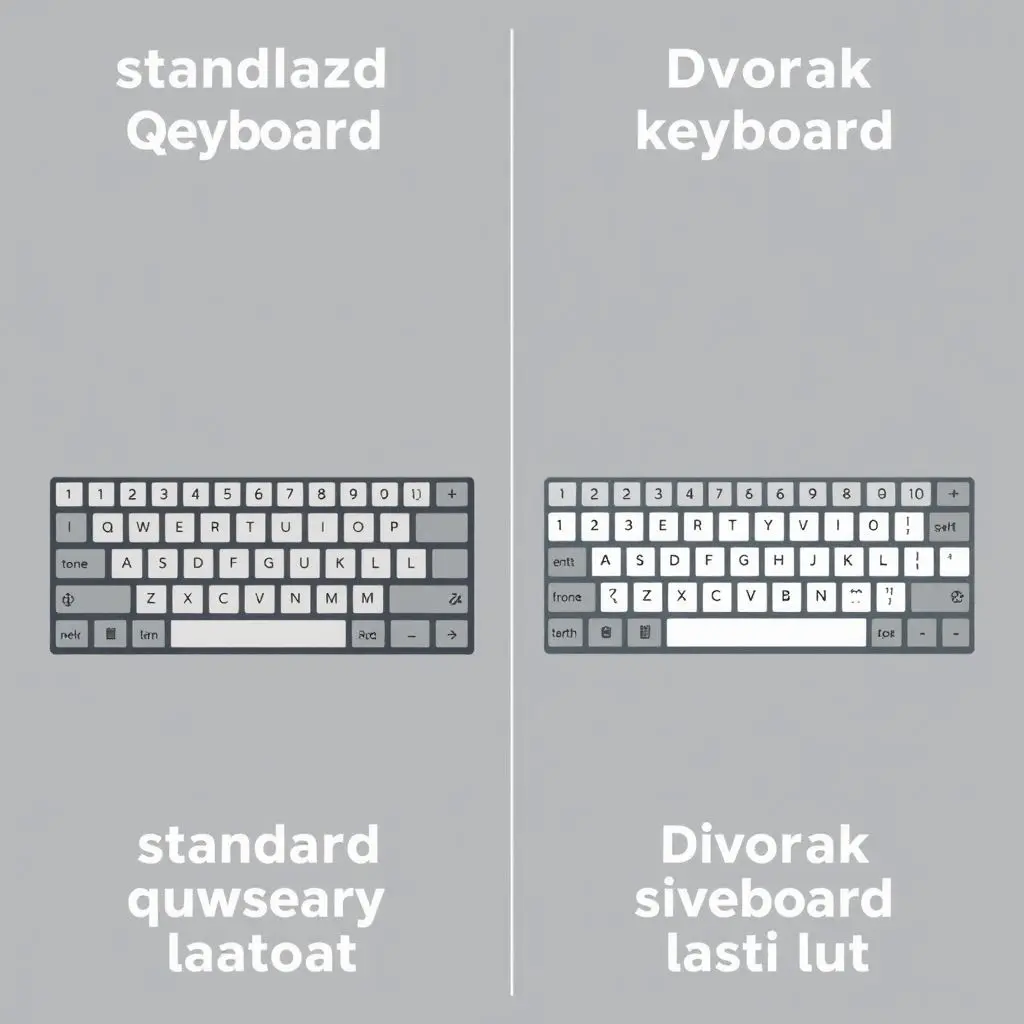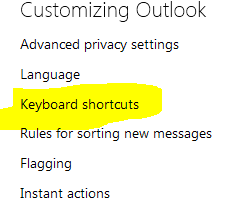Take a moment and cast your gaze down at the array of keys beneath your fingertips. What do you see? Chances are, it’s the familiar, slightly chaotic arrangement known as QWERTY. Look closer. Why are frequently used letters like ‘E’ and ‘A’ positioned further away, while less common ones like ‘F’ and ‘J’ sit comfortably under your index fingers? It seems… counter-intuitive, doesn’t it? Especially for something we interact with daily.
If you’ve ever found yourself pondering this very question, you’re not alone. The story of how the QWERTY keyboard came to dominate our digital lives, despite its apparent inefficiencies, is a fascinating tale of history, technology, and human inertia. It’s not a story about optimizing for speed in the modern sense, but quite the opposite.
Sometimes, seeing is believing, or perhaps, hearing the condensed version sparks the full curiosity. Check out this quick rundown we put together:
Now, let’s peel back the layers and delve deeper into the peculiar origins and stubborn persistence of the QWERTY layout.
Table of Contents
The Mechanical Beast: A Layout Born From Jams, Not Speed
To understand QWERTY, we have to travel back in time to the late 19th century, the era of mechanical typewriters. These early machines, groundbreaking as they were, suffered from a significant mechanical flaw: if adjacent keys were struck in quick succession, the typebars (the arms with the letter molds on the end) would clash and jam together. This was a constant source of frustration for typists and a hurdle for increasing typing speed.
Enter Christopher Latham Sholes, often credited as the inventor of the first practical typewriter and, crucially, the QWERTY layout. Contrary to popular belief that it was designed for maximum typing efficiency, evidence suggests Sholes and his colleagues arranged the keys to *slow down* typists. By separating common letter pairs (like ‘TH’, ‘ER’, ‘IO’) and placing frequently used letters in less accessible spots, they hoped to reduce the frequency of these debilitating jams.

It was a solution tailored specifically to the limitations of the technology of its time. The focus wasn’t on ergonomic ease or theoretical typing speed, but on practical mechanical reliability. It was about making the machine work without constantly seizing up.
From Jam Prevention to Unchallenged Standard
So, how did a layout designed to hinder speed become the universal standard? This is where the concept of path dependence truly comes into play. Path dependence explains how decisions made based on historical circumstances, even if those circumstances change, can lock us into a particular path, making it difficult and costly to switch later.
The Network Effect Takes Hold
After some iterations, the QWERTY layout was adopted by E. Remington and Sons, a major manufacturer of typewriters in the 1870s. Remington’s machines became widely successful. As their typewriters proliferated, more and more people learned to type on the QWERTY layout. Typing schools sprang up, teaching the QWERTY standard.
- Manufacturers: Produced QWERTY typewriters because that’s what people were learning on and buying.
- Typing Schools: Taught QWERTY because that’s the layout on the machines available.
- Typists: Learned QWERTY because that’s what was taught and what the job market demanded.
This created a powerful feedback loop, a classic network effect. The more people used QWERTY, the more valuable it became for others to also use QWERTY. Learning an alternative layout would be pointless if all the machines you encountered used QWERTY and all potential employers expected QWERTY proficiency.

By the time mechanical limitations like typebar jams were no longer an issue (thanks to electric typewriters and later, computer keyboards), QWERTY was already deeply entrenched. It was the default. It was what everyone knew.
The Road Not Taken: More Efficient Layouts
Over the years, various attempts have been made to introduce more efficient keyboard layouts. Perhaps the most famous is the Dvorak Simplified Keyboard, developed by Dr. August Dvorak in the 1930s. The Dvorak layout was scientifically designed to optimize typing speed and reduce finger fatigue by placing the most frequently used letters on the home row where fingers rest, and distributing keystrokes more evenly between both hands.

Studies have shown that Dvorak can significantly increase typing speed and reduce errors and strain compared to QWERTY for proficient users. So, why isn’t it everywhere?
The High Cost of Switching
Switching from QWERTY to Dvorak (or any other layout) comes with considerable costs:
- Individual Cost: Learning a new layout takes time and effort. Your typing speed will plummet initially, requiring dedicated practice to regain proficiency. For many, the perceived benefit doesn’t outweigh this immediate hurdle.
- Hardware Cost: While software allows changing the layout, physical keyboards are almost universally labeled QWERTY. Using a Dvorak layout on a QWERTY-labeled board is confusing, and dedicated Dvorak keyboards are less common and potentially more expensive.
- Societal Cost: Imagine a world where some people use QWERTY and others Dvorak. Public computers, shared workstations, even communicating layout instructions become problematic. The collective infrastructure, from hardware manufacturing to typing education, is built around QWERTY. The benefit of a unified standard, even if suboptimal, often trumps the theoretical benefits of a fragmented, more efficient system.
This is the essence of path dependence – the switching costs are too high, both individually and collectively, to abandon the established path, even if a better one exists.
QWERTY in the Digital Age: A Persistent Legacy
Today, mechanical jams are a non-issue for the vast majority of keyboard users. Our keyboards are electronic, and our typing speed is limited by our fingers and brains, not clashing metal bars. Yet, the QWERTY layout persists on virtually every computer, laptop, tablet, and smartphone keyboard interface globally.
It’s a testament to the power of standards and the deep roots of learned behavior. We teach QWERTY in schools, it’s the default on our devices, and it’s what billions of people worldwide are accustomed to. Switching costs haven’t disappeared; they’ve simply evolved from mechanical to cognitive, educational, and infrastructural.
So, the next time you glance at your keyboard, remember you’re looking at a direct descendant of a 19th-century invention, a layout designed to navigate the clunky mechanics of early typewriters. It’s not the fastest, nor arguably the most logical arrangement for typing in the 21st century, but it’s the path we took, and the path we remain on.
Frequently Asked Questions About QWERTY
Here are some common questions about the QWERTY keyboard layout:
Is QWERTY actually the most inefficient layout?
While not the *most* inefficient possible, layouts like Dvorak or Colemak are demonstrably more efficient in terms of finger travel and workload distribution based on English language letter frequency and common sequences. QWERTY was designed for a different constraint (mechanical jams), not speed or ergonomics.
Could we ever switch to a different layout universally?
A complete, global switch is highly unlikely due to the immense coordination and cost involved across hardware, software, education, and user retraining. However, individuals can and do switch to alternative layouts for personal use, especially if they prioritize potential long-term ergonomic benefits or typing speed gains.
Are there benefits to sticking with QWERTY?
The primary benefit is universality. QWERTY keyboards and interfaces are everywhere. You can sit down at virtually any computer or pick up any phone globally and know how to type. This widespread compatibility and lack of a learning curve on shared devices is a significant advantage derived purely from its status as the default standard.
Are newer alternative layouts better than Dvorak?
Layouts like Colemak (designed in 2006) are often considered improvements even over Dvorak by their proponents, aiming for even less finger travel and easier transition from QWERTY by changing fewer keys. However, they face the same fundamental challenge of overcoming the established QWERTY standard.
A Relic’s Reign
The QWERTY keyboard stands as a compelling example of how history shapes technology, and how standards, once established, can be incredibly resistant to change. It’s a relic of a bygone mechanical era that continues to define how we interact with the digital world, not because it’s the optimal solution today, but simply because it was the solution that took root yesterday. It’s a practical, everyday illustration of path dependence in action.




